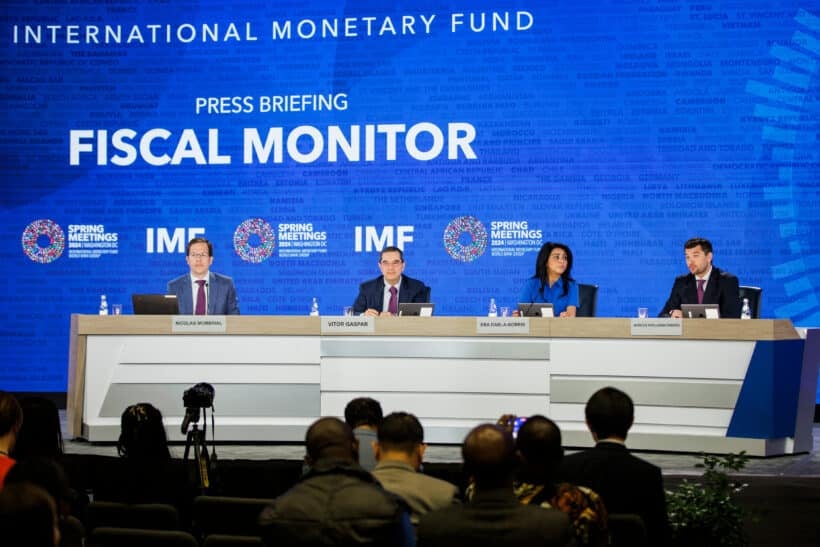
The International Monetary Fund says South Africa needs to implement a debt ceiling as part of an overall strategy to contain increasing indebtedness in Africa’s largest economy.
South Africa public debt to gross domestic product ratio is projected to reach 86 percent by 2029 amid slow growth and continued bailouts of struggling state-owned enterprises such as power utility Eskom, logistics operator Transnet and airliner South African Airways. The national treasury says debt should peak at 75 percent of GDP by 2027 before declining, compared with 49 percent before the Covid-19 pandemic.
“South Africa has a good fiscal rule and complementing this with a debt ceiling could be useful in improving expenditure efficiency,” Era Dabla-Norris, the IMF’s Deputy Director for Fiscal Affairs told a news briefing at the release of its April 2024 Fiscal Monitor report. “We believe more decisive efforts are needed to cut spending and this can be done by reducing transfers to state-owned enterprises, rationalizing untargeted subs while protecting public investment and protecting well targeted social assistance for vulnerable populations.”
The country barely avoided a recession last year, posting growth of 0.6 percent, which the IMF forecasts could climb to 0.9 percent this year, before accelerating to 1.2 percent in 2025 as power supply improves, and the impact of economic reforms kicks in.
For sub-Saharan Africa the fund, sees sub-Saharan fiscal deficits declining to 4 percent this year versus 5.2 percent in 2023, and further improving to 2.7 percent by 2029. General debt to GDP ratios should decline to 44 percent by 2029 compared with 55 percent last year.
The fund is recommending that governments around the world avoid fiscal slippages and focus on rebuilding buffers in order to safeguard fiscal sustainability in the medium term. This as it forecast global public debt may top 100 percent of GDP by the end of the decade from 93 percent now.
“Fiscal consolidations are never easy but it is best not to wait until markets dictate their conditions. The right approach is to start now, gradually, and credibly. Once inflation is under control, credible multiyear consolidations will help pave the way for further monetary policy easing,” the report says.
This was especially pertinent this year as half of the world’s population goes to the polls to elect new governments.
“History shows governments tend to spend more and tax less during election years,” it said. “Deficits in election years tend to exceed forecasts by 0.4 percentage points of GDP, compared to non-election years. In this great election year, governments should exercise fiscal restraint to preserve sound public finances.”

